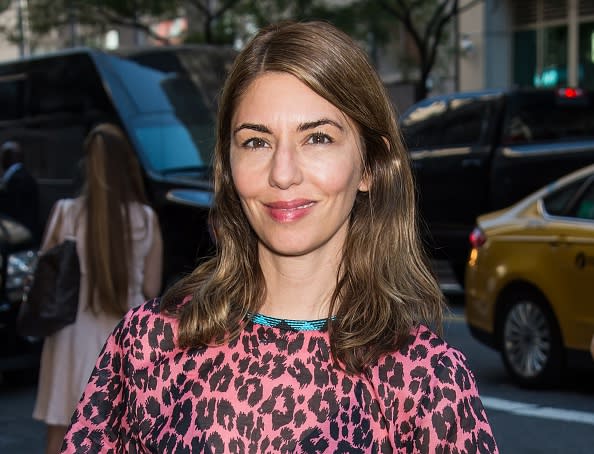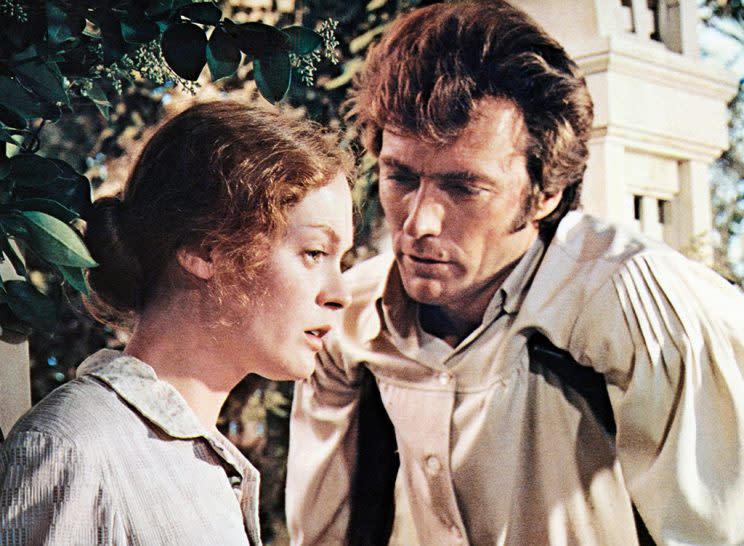Sofia Coppola Talks 'The Beguiled': 'At Its Core, It's a Story About the Dynamics Between Women'

With her Civil War-era movie The Beguiled, Sofia Coppola has already had a groundbreaking impact — her Best Director prize at this year’s Cannes Film Festival is only the second ever for a woman. Yet her movie — and life — are also comfortably retro: The Beguiled was shot on film, not digital. It reinvents a Don Siegel-Clint Eastwood potboiler from 1971. And you’ll never find Coppola on social media. For a director with an image for cutting-edge chic, she’ll frequently surprise you with against-the-tide twists.
A character poster for The Beguiled helps explain the paradox. Nicole Kidman, as the steely-magnolia headmistress of a girl’s school, gets the tagline: “She knows what she wants.” So does Coppola. She is soft-spoken, but each of her films is uncompromisingly hers.
Her style ranges from the pop sensibility of The Bling Ring and Marie Antoinette (which brought disco dancing to the 18th century) to the low-key European aesthetic of Lost in Translation and Somewhere.

The Beguiled, based on Thomas Cullinan’s novel as well as the old movie, shares some of the gauzy romantic look and hard-nosed realism of Coppola’s first feature, The Virgin Suicides (1999), about five adolescent sisters resisting their sheltered lives and repressive parents. But the new film takes a Southern Gothic turn.
Kidman plays Miss Martha, trying to keep up manners and appearances as war rages around her nearly deserted school. Kirsten Dunst plays a repressed teacher, Edwina, while Elle Fanning presents a teenager awakening to sexuality. Colin Farrell, as a wounded Union soldier, is taken into this hothouse world of wilting Southern belles. He is the willing object of their lust and romance, until mean-girl jealousy sets the plot on a threatening course.
A few days before the film’s opening, Coppola sat in a quiet bunker-like meeting room at Lincoln Center, incongruously dressed in an elegant, flowy midi dress (“from my friend Anna Sui”) before an appearance at the Film Society. Her conversation as deliberate and considered as her films, she talked to Yahoo Movies about her creative choices; starting out in the shadow of her father, Francis Ford Coppola; and the backlash about eliminating a slave character from The Beguiled.
You made this film from the female characters’ point of view, which is the biggest difference from the original. The other big difference is that the style of the original is so over-the-top.
The original is pretty ’70s, too. It’s much darker, and the whole palette’s different.
Did you always see your film as more restrained? The tension is boiling under the surface of that prim exterior.
That’s what I loved about the story, so I really wanted to embrace it. I tried to forget the Don Siegel movie after seeing it, and I went back to the book and started imagining how I would tell the story in my own way. Creating the world, in the beginning I want it to feel delicate and feminine, and have a real contrast when the soldier comes in. He thinks he’s in this lovely ladies world, and you’ll be surprised when the shift comes. I wanted to show the long, slow days of the heat when nothing was happening, hearing the cicadas. I loved that there was this sexual repression under their corsets.
You’ve got these women at many different stages, from schoolgirl crush to lust. You had to channel all that as a writer.
I’ve been each age of the girls, so I could imagine and put myself in each one of them. Parts of it remind me a little bit of Virgin Suicides, with the girls trapped, but it was interesting for the first time to think about a group of women together at different stages. We chose the aspect ratio 1:66 which is a little bit taller and shorter on the side to feel the claustrophobia of them all trapped in this house.
By shifting the point of view, the Colin Farrell character becomes very enigmatic. We don’t know what he’s thinking.
I wanted you to understand it through the women and their wondering if they could trust him, to be in Edwina’s mind when she’s thinking, “Does he really love me?” I want the audience to ask that too because that’s what she is trying to figure out.
You stay true to the period details. Is there something about the story that resonates today?
At the core of it, it’s a story about the dynamics between women, which I notice in modern day, and also power dynamics between men and women that are still relatable. So you can get lost in this world, but the themes are relevant. There’s always a mystery between men and women.
In the original film, there are a couple of episodes that are the women’s sexual fantasies, and flashbacks where you see that Martha has had an incestuous relationship with her brother. Did you consider including any of that?
No. There were a lot of things in the movie I didn’t want to include. You have psychedelic fantasies, and incest. It was pretty far out. I wanted it to be more relatable. And the slave characters were done in a really stereotypical voice in the book that I didn’t feel comfortable with.

There’s been criticism of your cutting out the slave character. How do you respond to that?
I didn’t want to treat that character without respect and I felt if I made her a side character I wouldn’t be giving that subject the respect it deserves. I think it’s an important story, but that wasn’t the one I was telling. I really wanted to keep the focus on this group of isolated women. And the idea that the slaves had left made them even more cut off.
When you started out with Virgin Suicides, you had baggage from having acted and having been panned in Godfather III. There were also whispers that your father was on set telling you where to point the camera. Did that skepticism affect you?
I was kind of glad there was low expectation because I felt like there was less pressure. You don’t expect the daughter of a great filmmaker to make a great film. I try not to think about what people say, and just focus on the movie I want to make. If you think about that too much, it’s hard to do stuff.
Is there one of your films that people respond to more than the others?
Lost in Translation is probably the most known, but a lot of people come up and say Marie Antoinette. At the time, people didn’t love it, so it’s fun when they say that one. And I was surprised that Virgin Suicides is known a lot by young girls who weren’t even born when I made it. Somehow, teenage girls rediscovered it. I was happy they connected to it after all this time.
You shot The Beguiled on film, and you’ve said you want people to see it on a big screen. Do you think you’re going against the tide here?
No. We really made it to see on a big screen. I think the photography is beautiful. And it would be a different experience seeing it with an audience. When people laugh and are scared together, there’s something communal. I also appreciate that we’re so connected [to technology] in our modern lives, when you watch a movie at home it’s hard to totally ignore your phone, or you’re halfway doing other things. There’s something about cutting off from the world and losing yourself in a world on a big screen.
You’re not on social media, are you? Why not?
It doesn’t appeal to me. I grew up with such an idea of privacy being really important, so the idea of oversharing personal sides of you — it conflicts with how I was raised. And I don’t have time. It’s like a whole other job. I have children, and my creative life.
You don’t actually show the goriest parts of The Beguiled on screen.
The whole thing was walking a line. I wanted it to have humor but not go into full camp, and I wanted to have enough gore to have fun with but not be completely distasteful. I thought it was more scary not to see the actual scary scene.
‘The Beguiled’: Watch a trailer:
Read more from Yahoo Movies:

 Yahoo Movies
Yahoo Movies 
